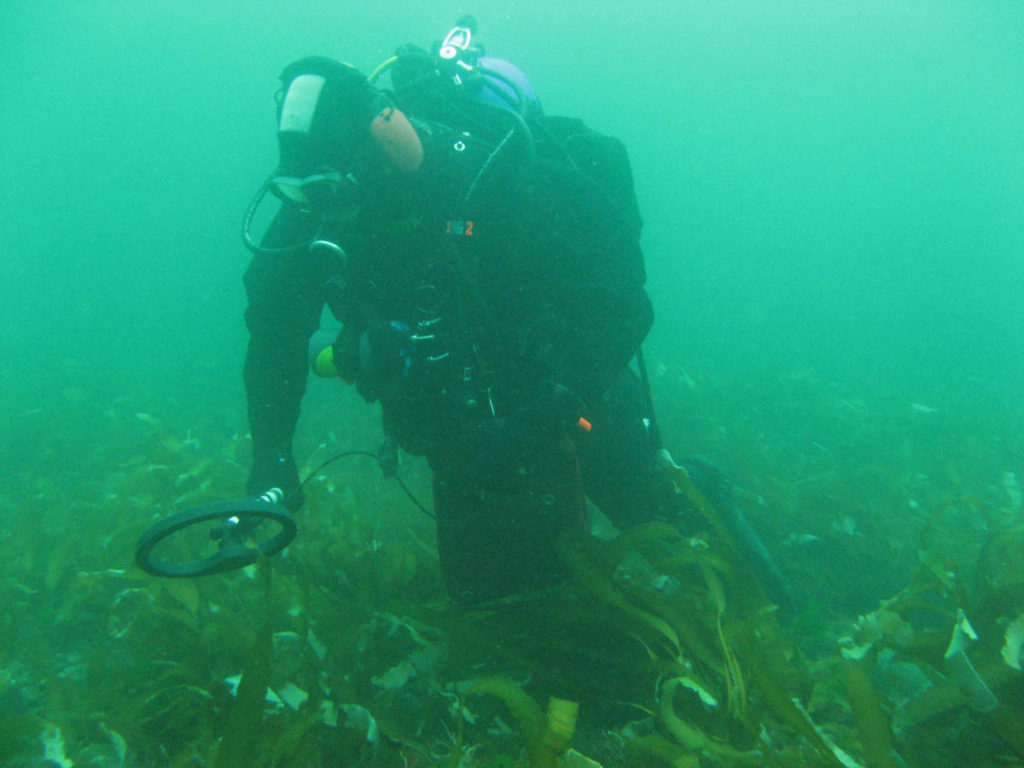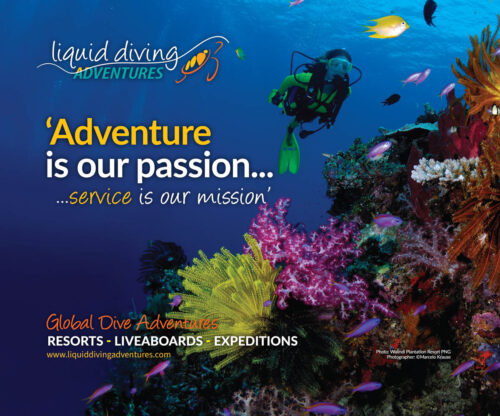It’s something like the classic “chicken and egg story.” Which came first? In Terry Dwyer’s case the question is “shipwrecks or scuba diving?” There never was any doubt in his mind. His sole purpose to dive was to facilitate his passion for searching shipwrecks.
That passion was triggered by exposure to The Undersea World of Jacques Cousteau on television that focused on shipwreck diving. It was a big adventure to find ships at the bottom of the ocean and Dwyer wanted to be part of it.
But it doesn’t end with himself. He teaches strategies at workshops that can accommodate one to 50 people. This includes the dry-land research necessary before getting into the water. With much smaller groups he offers equipment training.
“We do a lot of consulting work for those looking for wrecks,” Dwyer says of his business, called “Shipwreck School,” (www.shipwreckschool.ca), in Spanish Ship Bay on the eastern shore of Nova Scotia. “We have a basic workshop where we can spend an afternoon or a day on how to look for wrecks, right up to teaching people how to operate side scan sonar and a marine magnetometer. We teach workshops all over North America, usually at dive shops. We have several Power Point presentation workshops.
Dwyer has written two books on the subject, Wreck Hunter – the Quest for Lost Shipwrecks, in 2005 and Wreck Hunter 2, the Adventure Continues, in 2015, which is now in its second printing. This gave him a new insight into the popularity of the sport. “The majority of people who buy the book aren’t divers. The public has an insatiable appetite for shipwrecks. Part of it is the mystery genre of the Titanic. The divers are a very small percentage (of book buyers).”
For those like Dwyer, who want to search undiscovered wrecks, there is lots of potential, especially in Nova Scotia. In his second book, he writes that there are more than 10,000 shipwrecks off Nova Scotia’s coast and less than one per cent of them have been found.
Advances in equipment also improve the odds for a shipwreck hunter. He writes that the marine magnetometer is “the most indispensable tool for shipwreck hunting due to its low cost and its ability to detect magnetic objects at distances much greater than conventional metal detectors.”
The side scan sonar involves bouncing high-energy sound beams off the bottom, which sends back an image of the sea floor. “You can buy side-imaging sonar for $1,000,” says Dwyer. “Most professional shipwreck hunters use this equipment. It (wreck hunting) has never been easier.”
New technology has resulted in a rapid increase in finding wrecks. “But it takes time and money. Usually you have one but not the other.”
Wrecks are never where they are supposed to be, so patience is a must for those who try to find them. Dwyer looks on it as “a Cousteau adventure.” He has an extensive library of up to 30 years on shipwrecks. “I do it because it is a passion.” His own library, as well as archives in major cities, are starting points when he is researching a wreck. Discovering the ship’s port of origin or its nationality may be helpful if you travel there to do some research. Sometimes the best information comes for local people, especially if your search site is remote, he suggests.
There are two theories on how to begin a shipwreck search on the water. They are known as “shotgun” and “rifle.” The shotgun involves searching a wider area and seeking several wrecks. By not focusing on just one ship it provides a better chance of finding something. Conversely, the rifle approach is focused on a specific ship so the objective is narrowed down.
Wreck Hunter 2, the Adventure Continues outlines the process from the start to finish of a shipwreck search. It also addresses the controversy over artifacts, right up to today’s laws and regulations. This is covered in a chapter entitled “The Great Shipwreck Debate,” which the author traces back to 1977. That’s when the Department of Indian and Northern Affairs and Parks Canada entered the debate. Dwyer reports that a private sector shipwreck exploration company discovered the ship L’Auguste a year after the publicly-funded Parks Canada Marine Archeology Unit failed to find it. This helped spark the debate.
Wreck Hunter 2 reports on specific wrecks that have been found. L’Auguste is one of them. The merchant ship was wrecked in a storm in November of 1761 in Aspy Bay on the coast of Cape Breton, Nova Scotia. It was discovered in 1977, more than two centuries later. The perils of the rocky coast of St. Paul Island, northeast of Cape Breton Island’s northern tip, are also explored.
“It is the long unsolved mystery (of shipwrecks),” Dwyer says of his passion for finding shipwrecks. “You don’t know what you will find, what’s in the archives . . . Every shipwreck has its own story to tell. It’s all about unanswered questions.”






